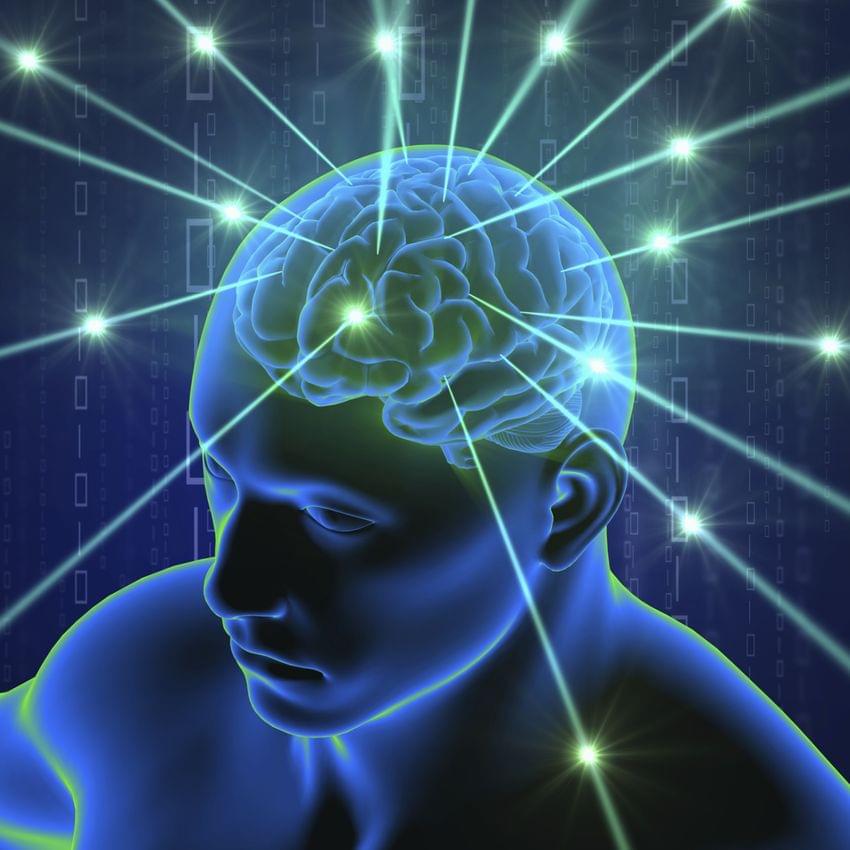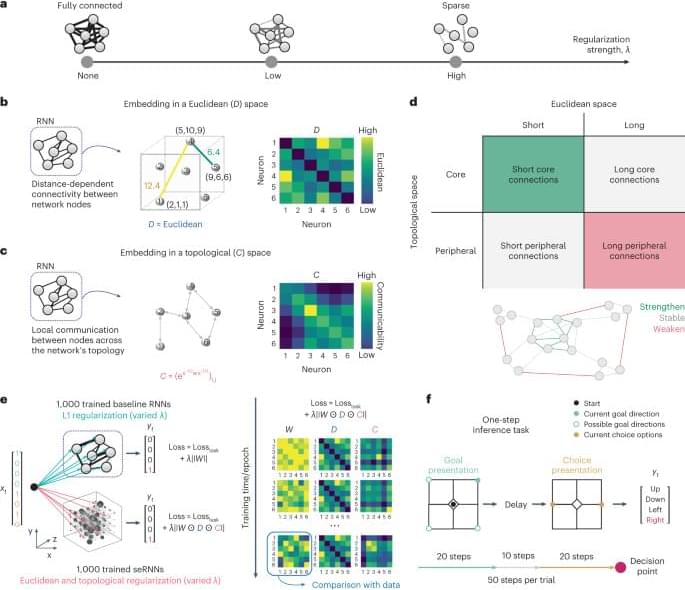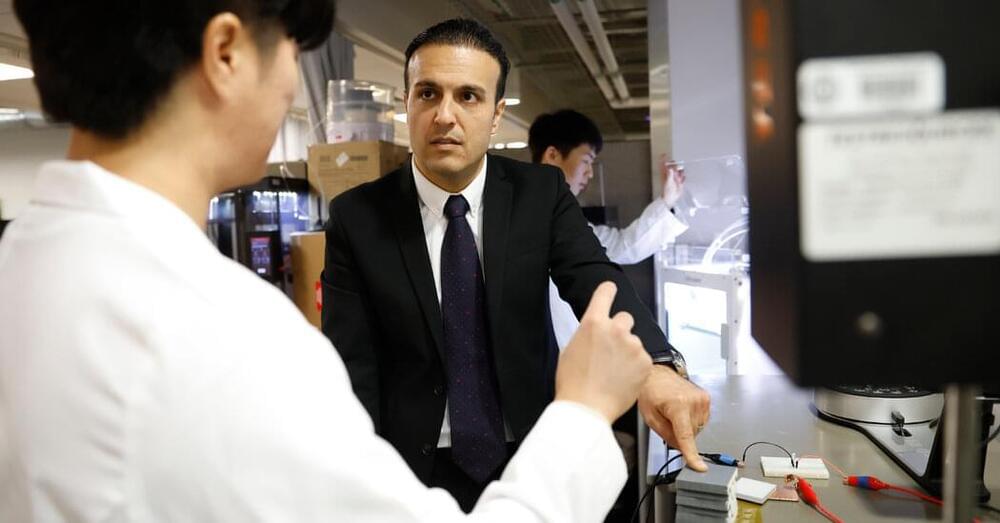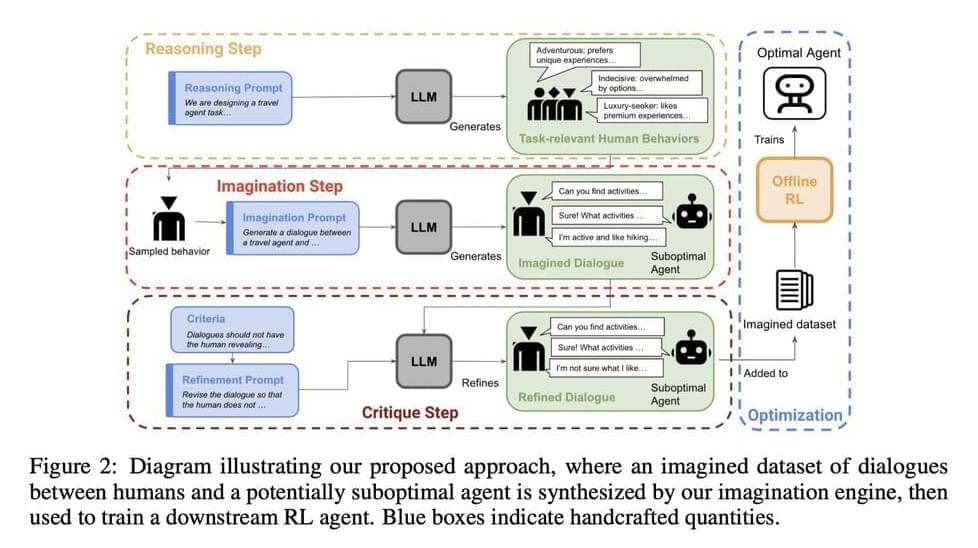Investors raced to reinstate Altman after the OpenAI board fired him Friday. But Elon Musk says for AI safety reasons the true reason for the firing must be revealed.



Cambridge scientists have shown that placing physical constraints on an artificially-intelligent system—in much the same way that the human brain has to develop and operate within physical and biological constraints—allows it to develop features of the brains of complex organisms in order to solve tasks.
As neural systems such as the brain organize themselves and make connections, they have to balance competing demands. For example, energy and resources are needed to grow and sustain the network in physical space, while at the same time optimizing the network for information processing. This trade-off shapes all brains within and across species, which may help explain why many brains converge on similar organizational solutions.
Jascha Achterberg, a Gates Scholar from the Medical Research Council Cognition and Brain Sciences Unit (MRC CBSU) at the University of Cambridge said, “Not only is the brain great at solving complex problems, it does so while using very little energy. In our new work we show that considering the brain’s problem-solving abilities alongside its goal of spending as few resources as possible can help us understand why brains look like they do.”


A fundamental question in neuroscience is what are the constraints that shape the structural and functional organization of the brain. By bringing biological cost constraints into the optimization process of artificial neural networks, Achterberg, Akarca and colleagues uncover the joint principle underlying a large set of neuroscientific findings.


Investors are always looking for the next great breakthrough in technology. As computers are indispensable tools for managing everything from finance to healthcare and smart cities, it only makes sense to look at the next stage of development and A-rated quantum computing stocks.
Quantum computing is still in its early stages, but companies are already making inroads. Zapata surveyed executives at 300 companies with revenues of $250 million and computing budgets over $1 million. Of those, over two-thirds spent more than $1 million annually to develop quantum computing applications.
Quantum computer stocks represent companies trying to revolutionize cryptography, optimization, drug discovery and artificial intelligence. It holds promise for solving complex problems currently infeasible for classical computers due to their exponential time requirements.



Large Language Models (LLMs) have shown great capabilities in various natural language tasks such as text summarization, question answering, generating code, etc., emerging as a powerful solution to many real-world problems. One area where these models struggle, though, is goal-directed conversations where they have to accomplish a goal through conversing, for example, acting as an effective travel agent to provide tailored travel plans. In practice, they generally provide verbose and non-personalized responses.
Models trained with supervised fine-tuning or single-step reinforcement learning (RL) commonly struggle with such tasks as they are not optimized for overall conversational outcomes after multiple interactions. Moreover, another area where they lack is dealing with uncertainty in such conversations. In this paper, the researchers from UC Berkeley have explored a new method to adapt LLMs with RL for goal-directed dialogues. Their contributions include an optimized zero-shot algorithm and a novel system called imagination engine (IE) that generates task-relevant and diverse questions to train downstream agents.
Since the IE cannot produce effective agents by itself, the researchers utilize an LLM to generate possible scenarios. To enhance the effectiveness of an agent in achieving desired outcomes, multi-step reinforcement learning is necessary to determine the optimal strategy. The researchers have made one modification to this approach. Instead of using any on-policy samples, they used offline value-based RL to learn a policy from the synthetic data itself.
